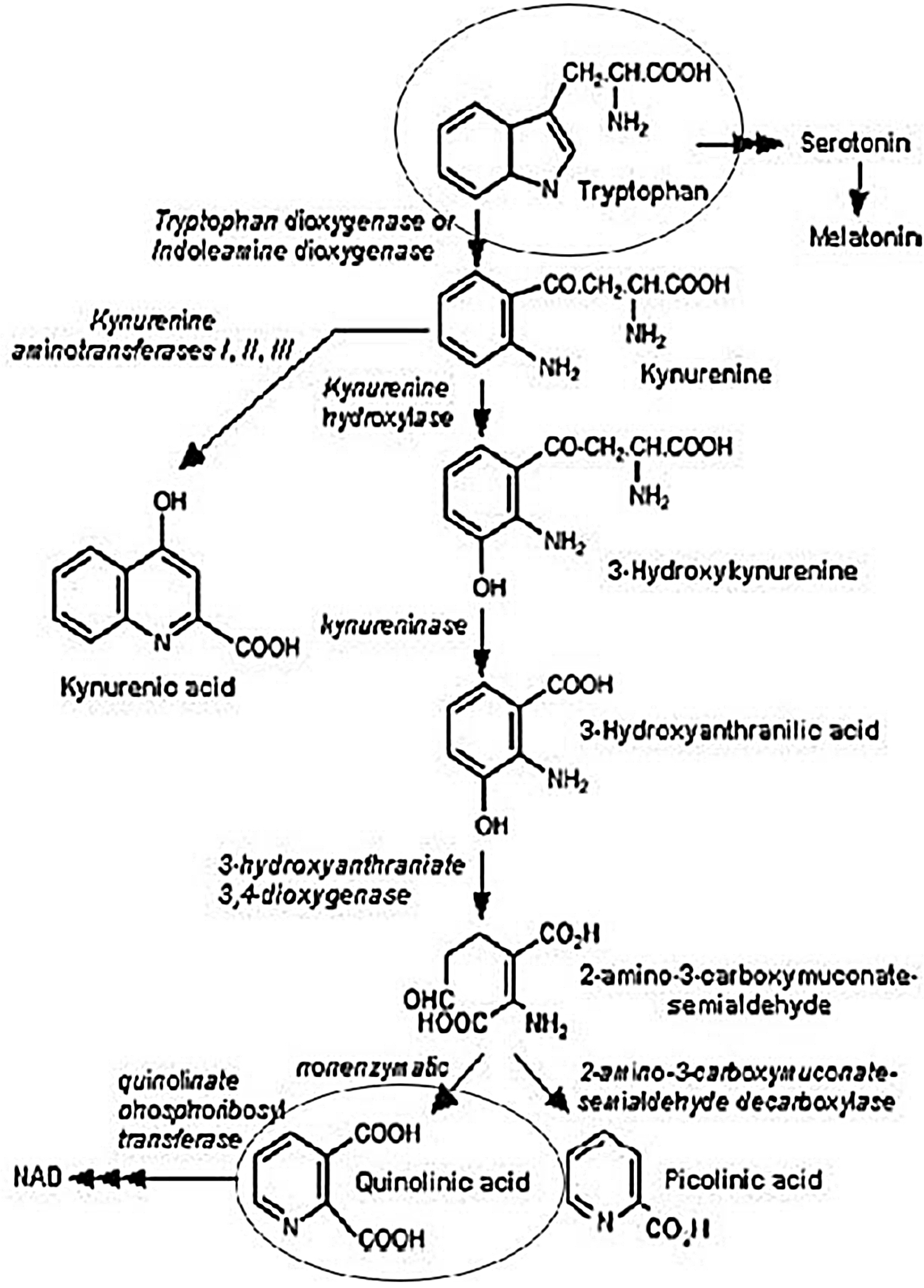Published online by Cambridge University Press: 23 March 2020
Pancreatic carcinoma (PC) belongs to the most aggressive tumours worldwide, with a five year survival of 7%. Mostly, diagnosis is made in late stages, as by now no early detection method is available. Symptoms of depression occur frequently before diagnosis of PC. PC and depression are both known to go along with changes in the kynurenine-pathway.
This study aimed to examine the kynurenine pathway (Figure 1) and evaluate a possible depression in newly diagnosed PC patients in comparison to healthy controls (HC).
26 PC patients and 26 age and sex matched HC participated in this study. We investigated serum-levels of kynurenine, kynurenic-acid, quinolinic-acid and tryptophan. To diagnose features of depression SKID-II and BDI were used.
None of the participants fulfilled criteria of a depressive episode. Regarding BDI-scores, 2 PC-patients showed features of mild depression. PC patients showed significantly lower tryptophan-levels (P = 0.05) and significantly increased quinolinic-acid levels (P = 0.01) compared to HC. Quinolinic-acid levels were correlated with BDI (r = 0.23, P = 0.02).
Our study results imply IDO-activation and kynurenine-pathway activation by showing decreased tryptophan and high quinolonic-acid levels in our PC patients compared to HC. Larger studies are needed to gather further insight in the kynurenine pathway in PC.
The authors have not supplied their declaration of competing interest.
Figure 1
Comments
No Comments have been published for this article.